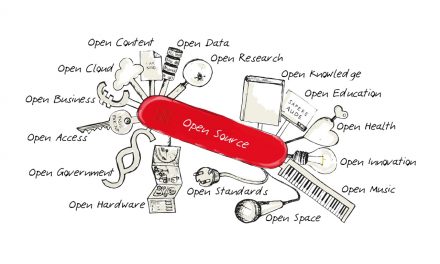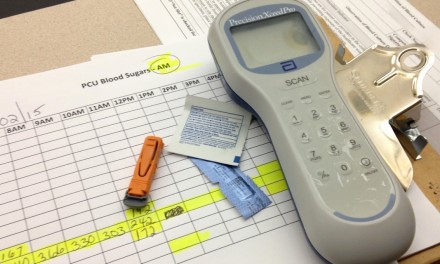Health care has a reputation for being 20 years behind in innovation, whether it's health care delivery, health care IT, or some other area, there are seemingly zillions of examples of great ideas that went nowhere fast, or excruciatingly slowly. Yet, health care innovations persist, developing new science, devices and treatments at a rapid pace. The problem in health care is determining which potential innovations will succeed and which will fail.
Whether you're a venture capitalist, entrepreneur, vendor, or health care provider wouldn't it be nice to be able to better evaluate the likely success of a particular innovation? If only we could identify the barriers to adoption early on, and bolster the chances for a new innovation.
Most who have been in health care for any length of time experience a crisis of confidence when they've had enough of the seemingly arbitrary way in which some seemingly deserving innovations fail while others succeed. This is the point where many leave health care for more "rational" markets. Struggles around innovation are central to medical connectivity — automating workflows, integrating information systems with medical devices, new care delivery models (variable acuity units, remote monitoring) — all depend on innovation to succeed.
What follows are three different perspectives on how health care is different from other markets. They each offer specific things to consider when starting a new endeavor in health care. Besides the differences in the three perspectives, be sure to note the similarities.
The Academic
A reader and friend recently shared with me an article from the Harvard Business Review, titled "Why Innovation in Health Care Is So Hard." In this article author Regina Herzlinger offers a framework for considering innovation in health care - to identify barriers and gauge the likelihood of success. The following is my take on Herzlinger's Six Forces. You still need an in-depth knowledge and understanding of health care, but the following provides a useful framework for mapping successful change.
- Actors
- Many potential advocates and detractors lie in wait for potential health care innovations. "What's in it for me?" is a frequent question when it comes to change in health care. Every group of players has numerous subgroups - even sub-subgroups. A useful analysis here requires digging deep into each group's unique and varying anthropology.
- Money
- The ways of making money and acquiring capital in health care differ from those of most industries. Disassociations between consumers, providers and payers (and not just patients, doctors, and insurance companies) create market distortions that make traditional market assessments of limited value.
- Timing
- Market requirements, competition, and the health care market environment change over time. Meaningful changes in health care are frequently dependent on structural factors in the market, or antecedents like technology availability and adoption, regulations, even publicity and news.
- Regulatory
- Regulations are pervasive in health care. Successful innovation means navigating current regulations and gauging the likelihood of future regulatory changes. Additionally, the necessity for adoption of a Quality System can be a large and often unplanned for bite into an innovator's budget.
- Customers
- The relationship between who buys, pays and who benefits is fragmented in health care. Customers can be patients, referring physicians, hospitals - anyone who buys a product or service in health care.
- Proofs
- It used to be that big players in health care could drive innovation without really demonstrating clear benefits. These days unambiguous and quantifiable proofs are increasingly important. Soft benefits like "patient safety" or "increased nursing time at the bedside" are not the drivers they once were. The marketing claims you want to make must be supported by Real World Data and/or Real World Evidence.
There are other models for innovation in health care (e.g., Disruptive Innovation, and Diffusion of Innovation), but these models tend to be retrospective, focusing on the traits of successful innovations and how they occurred. Neither of these models is well suited to gauging potential success or threading a path to market adoption.
The Venture Capitalist
Ursheet Parikh at the Mayfield Fund created a good blog post I recommend on the same general topic as this post, but from the venture capitalist perspective: 6 Reasons Why Digital Health Startups Will Fail. Parikh is optimistic about innovation, mentioning emerging technologies like digital health, the cloud, AI, etc. Combined with a potential reduction in regulations that could replace the Accountable Care Act these factors could create opportunities for innovation.
Parikh's list is similar to Herzlinger's, but with an emphasis on the things an investor or entrepreneur might not know they don't know. Here's his list of 6 reasons with my comments:
- You’re Blind to How Healthcare Is Different
- Hoo boy, right to the point. If you're from outside of health care, or even if you've been in health care for years, success in a particular endeavor requires substantial effort to identify the things you don't know you don't know. Herzlinger's list is a good prompt for discovering many of these unknown unknowns.
- You Fail to Follow the Money
- The disconnect between who uses, who buys and who pays for things in health care is pervasive and varied. This must be understood in detail to enable a strategy that will succeed in health care. One example: Try to find how how much it would cost you to get a knee replacement. Your provider won't know and probably doesn't even know who would know.
- You Don’t Grok the Stakeholders’ Priorities
- In health care, buyers have a myriad of potential solutions in which to invest that all offer attractive ROIs. However, these buyers have the capital to buy only a small fraction of those potential solutions. Certainly ROI must be there, but this is not the key driver to adoption — that varies across market segments and buyers. Parikh lists the 4 most common drivers to adoption that he's seen. This is a good list, but it is not complete and there are always exceptions.
- You Haven’t Prioritized Scalable Business Models
- In this article, a scalable business model is one that translates from a minimum viable product sold to innovators and early adopters to a whole product solution that will be adopted by the early and late majority of the market (where the big money is). Anticipating that transition and doing some work to validate your plan is critical — figuring this out along the way has a low probability for success.
- You Don’t Know the Status of the Incumbent and the Ecosystem
- Here Parikh asks lots of good questions that would make up a good market opportunity and competitive assessment. While the process for these assessments emphasized by large firms serving multiple vertical markets is important, deep market knowledge of health care is essential to getting meaningful insights into the market and your proposed strategy.
- You Haven’t Gotten Success Metrics Straight
- The above points in Parikh's list is intended to normalize health care's quirks and hidden traps. While success metrics that are applicable across a variety of vertical markets are of value, in health care the focus should be a bit different — which are detailed in the article.
The Entrepreneur
We've heard from the academic and the venture capitalist, now we come to the entrepreneur. Thomas Goetz was the CEO and cofounder of Iodine, a digital health company when he wrote this article for Inc. Magazine: I Tried to Revolutionize Health Care. Here's Why It's So Hard to Crack.
As you read Thomas' story about his experience in health care, you will be reminded of many of the points raised in the two lists above. It seems his conclusion is that there is no opportunity for disruption in health care. This is not true, although the opportunities for disruption are much narrower in health care than perhaps in other vertical markets. That said, disruption in healthcare does happen and new technologies get adopted and become standards of care. You do have to accept that your customers will be disrupted and that they have to work through this reality before they can decide to purchase anything. Buying cycles are lengthy because so many have to buy-in to and gear up for the disruption.
What We Have Learned
Much of health care lacks transparency and has a multitude of intermediary relationships between those who buy, pay and benefit from certain transactions. The term "payor" is a good example of this fragmentation, where the patient doesn't buy their health care, intermediaries do. This innovation risk model can be applied to any geographic market. Even single payor health care systems have shifting intermediaries and are highly regulated.
So the next time you're planning a startup, new product or service, try using this framework to create a model of market dynamics that will bolster your chances of success. Don't forget to dig deep and consider portions of the market that may lie outside your comfort zone. And for both the new and the serial innovators out there, remember health care is different.
Sources:
- Herzlinger, R.B., May 2006, Why Innovation in Health Care Is So Hard. Harvard Business Review
- The FDA Quality System Regulation/Good Manufacturing practices for medical devices. https://www.fda.gov/medicaldevices/deviceregulationandguidance/postmarketrequirements/qualitysystemsregulations/
- Christensen, Clayton M., Raynor, M.E., McDonald, R., December 2015, What Is Disruptive Innovation?, Harvard Business Review
- Use of Real-World Evidence to Support Regulatory Decision-Making for Medical Devices 1 Guidance for Industry and Food and Drug Administration Staff Document issued on August 31, 2017.
- Cain, M., Mittman, R., May 2002, Institute for the Future, Diffusion of Innovation in Health Care, Prepared for California HealthCare Foundation
- Ursheet, P., January 9, 2017, 6 Reasons Why Digital Startups Will Fail, Mayfield Blog
- Goetz, Thomas, June 2017, I Tried to Revolutionize Health Care. Here's Why It's So Hard to Crack, Inc. Magazine





You can read about similar barriers to entry from the entrepreneur’s point of view in this Inc Magazine article, I Tried to Revolutionize Health Care. Here’s Why It’s So Hard to Crack.
Part of the problem is whether “innovation” just means new and/or different, or whether it means useful and better. It is relatively easy to make things that are just different, it is harder to make things that matter. It is harder still to have objective evidence that it matters, as opposed to just saying so.